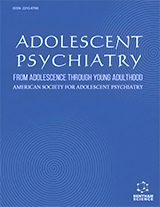Abstract
Alzheimer disease is a pathology causing severe problems with memory, thinking and behavior. It accounts for the majority of dementia cases and is the sixth leading cause of death in developed countries. Unfortunately a real cure is still missing and the drug treatments today available can only reduce symptoms. It belongs to a large class of diseases, called amyloidosis, in which endogenous proteins or peptides undergo a misfolding process switching from the physiological soluble configuration to a pathological fibrillar insoluble state. An important, but not yet fully elucidated, rôle appears to be played in these processes by transition metals (mainly copper and zinc) that have been observed to be present in fairly large amounts in patient's neurological plaques. In this review we will show that the challenging problem of understanding the physico-chemical basis of protein misfolding and aggregation can be successfully investigated with a combination of modern spectroscopic techniques and advanced first principle numerical simulations. In particular, it will be shown that different metals can rival in peptide binding thus adding support to the hypothesis that metal dyshomeostasis may be relevant in the Alzheimer disease development.
Keywords: Amyloidosis, Aβ-peptide, ab initio molecular dynamics, metal ions, X-ray Absorption Spectroscopy.






















